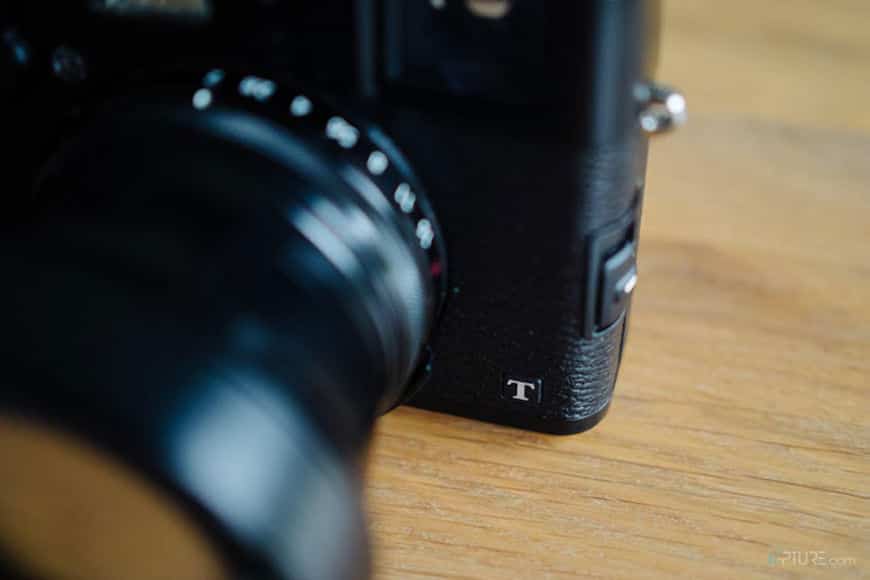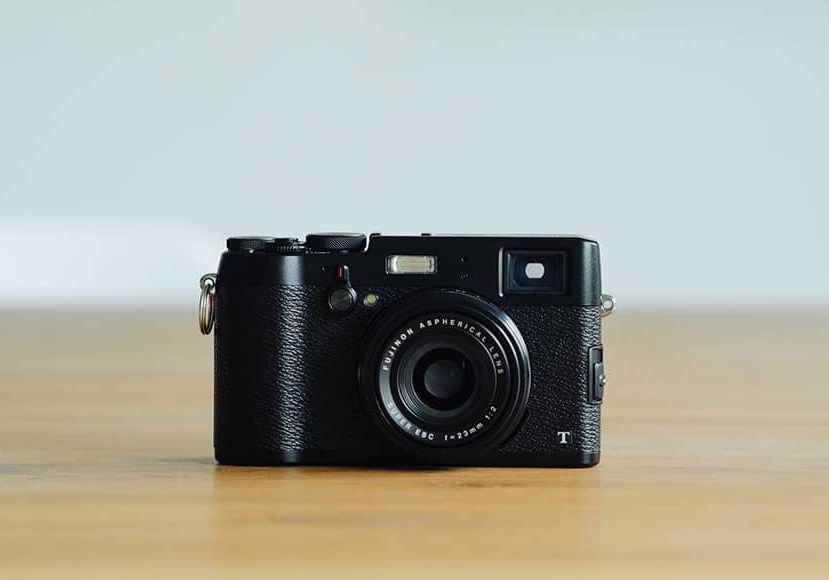
Fujifilm X100T Review
Read this Fuji X100T review to decide whether to upgrade from the X100s? An in depth Fujifilm X100T review with sample photos and useful information.
Before I get into this Fuji X100T review, I’d like to start with a story, or moreover my history with Fuji X100 cameras. Sometimes there are failed dates, abortive love stories. Such is my story with the Fuji X100/S/T series.
I loved the original Fuji X100; I was won over at first sight – it was the best pocket camera for me. Unfortunately, the relationship was short. The camera was very charming, full of promises, but full of defects. The break-up was sorrowful but quick.
Its successor, the Fuji X100S, had the same effect on me, but I was more cautious. Fuji listened to X100 users and improved on several points, including autofocus and general reactivity.
But it still wasn’t “it”.
I brought it with me on some assignments as a second or even third camera body, but it was not able to convince me (for professional use). The autofocus was much better, but it still had defects and the ergonomics were especially far from being perfect; special mention goes to the imprecise and practically unusable directional wheel.
I turned instead to the Fuji X-E2 and Fuji X-T1. Be that as it may, the Fuji X100s was and remains an excellent camera.
After a little more than a year and a half of good and loyal service, the Fuji X100s has now been replaced by the model T. Moreover, for those who aren’t interested in the new model, the X10sS can now be found for around 950 Euros, a pretty good deal.
Fuji X100T Review Summary
APS-C size X-Trans CMOS II sensor, high-speed EXR Processor II image processing engine and fixed 23mm f/2 lens produce impressive image quality. Equipped with the world’s first Advanced Hybrid Viewfinder with an electronic rangefinder, electronic shutter mode for speeds up to 1/32000, full HD 1080P video, 7 customizable function buttons, Wi-Fi and more.
In this Fuji X100T Review, I will content myself with giving my humble view on the points that appear to me to be the most important and interesting. It’s not a technical article; others can do that better than I can.
Also, once you’ve finished this article head over to this summary of the best Fuji lenses – the information is invaluable.
WHAT HAS CHANGED: X100S >> X100T
On the exterior, very few things have changed. The T replaces the S on the front side. The exposure compensation wheel indicates -3/+3 instead of -2/+2.
The screen is a smidgen larger and some buttons have been revised and corrected on the rear side of the X100T, including and especially the selection wheel (cf. above).
It was replaced by four directional buttons like on the Fujifilm X-T1 but better; they are easily usable. Otherwise, the two devices are practically identical.
Rather, what has changed is found on the inside. Below are the characteristics that I find most interesting. For everything else, you can see the details here.
– The “X-Trans CMOS II” capture and the 23mm f/2 objective are identical.
– The screen has gone from a 460,000 pixel definition (S) to 1,040,000 pixels (T) and from 2.8 inches (S) to 3 inches (T) diagonally. Viewing the images is thus far more comfortable and precise.
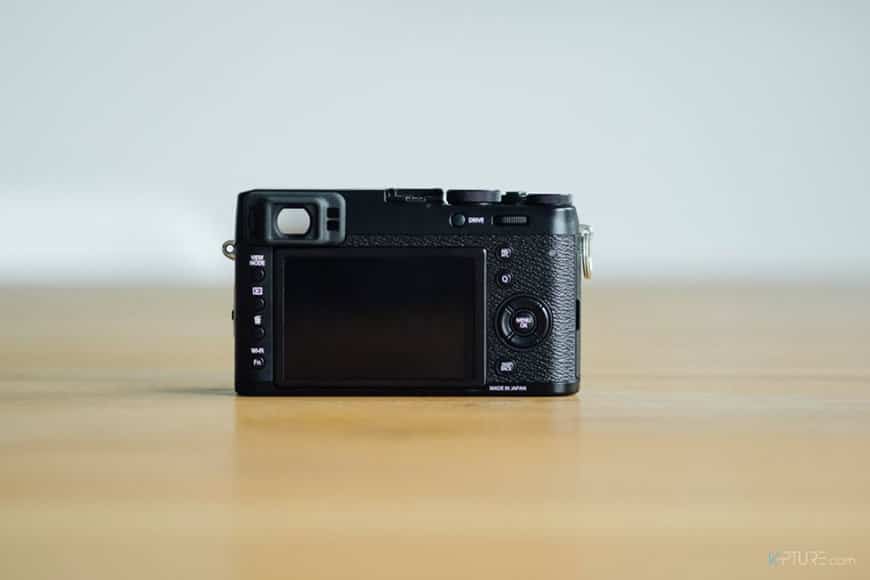
– The EVF (electronic viewfinder) is identical on both. The Fujifilm X100T, however, offers a third viewing mode and allows you to display a magnification of the focused area in a small separate screen.
– The mechanical shutter speed remains at 1/4000s on both, but the T offers an electronic shutter speed that goes up to 1/32,000s. Thus it is possible to take photos in direct sun, with full aperture (f/2). The X100T also offers a minimum speed of 4 seconds instead of ¼ second.
– The addition of a new film simulation, Classic Chrome, for a cinematic rendering.
– The aperture diaphragm ring allows you to open to intermediate “stops” (f/2.2, f/2.5, etc.), which was not the case with the X100/S. A welcome addition.

– Integrated WiFi: the X100T now has WiFi. This allows you to control your camera at a distance, via your smartphone or tablet. It’s practical. The iOS app is simple to use and free.
HANDLING
In this Fuji X100T Review, I found that the handling on this camera is good without being exceptional – identical to the other X100 models.
The Fujifilm X100T is a relatively small and rectangular camera. It has a small handle that doesn’t stick out far enough for normal-sized hands. Thus it has a quick tendency to slip (my personal opinion).
Nevertheless there is a solution: add one of these Lensmate thumb rests on the flash grip. This allows for a much better grip of the camera.

One of the big differences from the X100/S is the rear directional wheel. It was a little sketchy on previous models and thus difficult to use.
Fuji has fixed this problem on the X100T. The wheel now has four configurable directional arrows. The buttons spring sufficiently and are thus simpler to use than those of the X-T1.
Fuji now allows you to personalize 7 different buttons on the X100T. Changing the ISO, white balance, AF point, film simulation, etc. Practical and very personalizable.
The two upper wheels (speed and exposure compensation) are stiff enough; this keeps them from turning on their own by accident.
This is different from the ON/OFF button, which is very sensitive and too easily turned. When I put the Fujifilm X100T away in my bag, having taken care to turn it off first, I took it out to find it switched on.
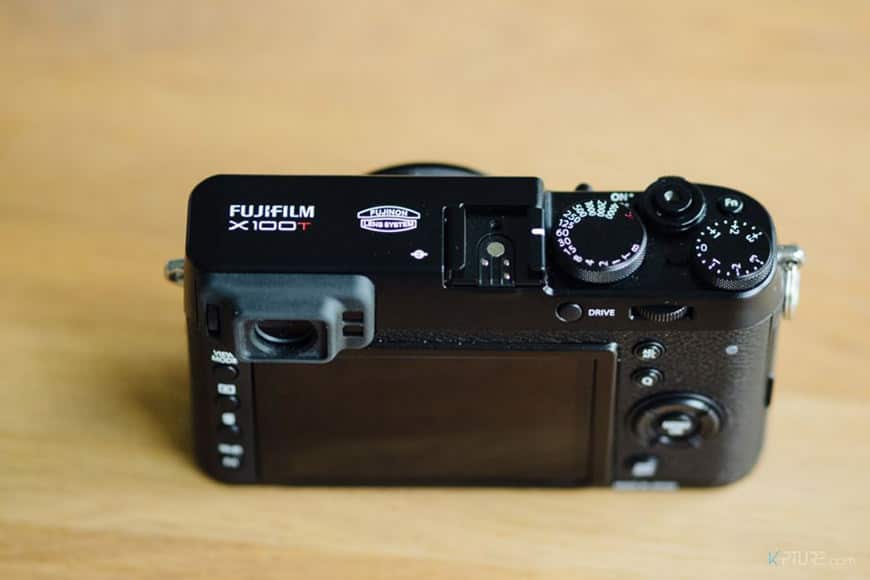
IMAGE QUALITY
No surprises on this front in this Fuji X100 T review. This camera is still Fuji after all. I found the image quality during my Fujifilm X100T Review to be purely and simply hallucinatory, on JPG as well as RAW.
The colour rendering is faithful and can become more or less beautiful or different depending on the filter used (e.g. Classic Chrome).
The sharpness is good at f/2 (fully open) aperture, but way better at f/2.8. It seems to turn slightly “fluffy” at f/2. This doesn’t bother me at all though.
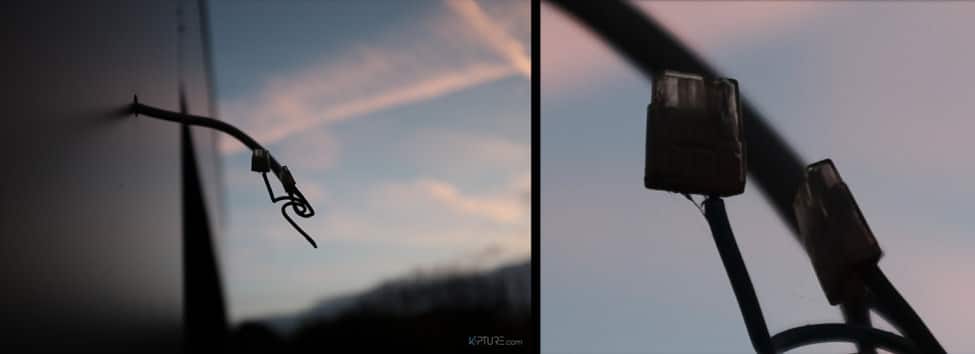



RESPONSIVENESS/AUTOFOCUS
This was a big problem with the X100, and almost resolved on the X100S. The X100T’s autofocus is slightly better again.
It’s more responsive, more precise, and quicker. I think that it is at the same level as that of the Fujifilm X-T1, even a little better.
The AF is slightly slower in “macro” mode, which is normal.
In any case, Fuji has greatly improved the AF and responsiveness on the T. I didn’t notice any problems focusing on small, low contrast objects under dim light. In these conditions, it returned to the focused area quickly.
In full daylight and under good light conditions, the AF is great. Sharp and precise.
In any case, it is possible to activate “high performance” mode for an AF a smidgen more reactive. You should be careful though, since this “turbo” mode is more power-hungry, leading to faster depleting batteries.
The general responsiveness of this camera during my time spent writing this Fujifilm X100T review seems very good. The camera switches on quickly and is ready to shoot almost immediately. The different buttons and menus are quickly accessible and react immediately.
The photos below were taken in very low light and the Fujifilm X100T had no problem grabbing focus.


ISO
It seems to me that the ability to shoot at high ISO is identical to the X100S since the two cameras use the same sensor.
Then again, it’s still staggering.
The images on the Fujifilm X100T remain perfectly usable at 3200 or 6400 ISO. A great feat for a small, affordable camera without a full frame sensor.

Fujifilm X100T, f/2, ISO 3200
SCREEN/ EVF
Fuji, with its X-T1, pushed hard with the EVF (electronic viewfinder). It’s large, comfortable and precise – a true joy to use.
The X100T has nothing to be ashamed of on this point and even does a little better since it offers a new focus mode that allows you to display a magnification of the focused area in a small separate screen. A bit gimicky, but still practical.
For the rest, the X100T’s EVF is quick and precise. The refresh rate is invisible to the naked eye. Other than this, the EVF of the X100T has the same options as the Fujifilm X-T1. Excellent!
The only drawback on this point: for those who wear glasses, the eyepiece of the X100T is less comfortable than that of the X-T1.
The rear screen of the Fujifilm X100T is better than that of its predecessor. More pixels (460,000 >> 1,040,000) and 0.2 more diagonal inches.
Clearer, more precise, and especially more comfortable. A big plus.
WHAT I LIKE
– Its compactness: The X100T and its 23mm fixed lens can slide without much trouble into a vest pocket or a small bag. Practical and take-anywhere.
– Its discreetness: For this Fujifilm X100T review, I am showing the all-black version which is a very discreet camera. Even the silver and black version is stealth and practical for making itself disappear.
– Its look: Whether you like it or not, the retro look of the Fujifilm X100T certainly doesn’t leave you indifferent. It reminds me of old cameras and attracts people’s attention. Walk around with it and you’ll soon have people complimenting it.
– Its screen: Bigger, better defined, and more comfortable. A pleasure to look at its images.
– Its image quality: A major strong point for Fuji, the image quality of Fuji X cameras is one of the best right now.
The raw JPGs are so good that it’s almost difficult to use the RAW. Remember though: the RAW images are still more adjustable.
– Its EVF: Big and clear. All the essential information is found there. Personally, I don’t know what I would do without it.
– Its responsiveness: Everything is quickly and easily accessible, thanks in part to its 7 configurable buttons.
– Its standby time: Fuji reports 330 pictures on a complete charge which seems correct for the size of the battery. I managed to take 450 photos with one charge with “high performance” mode activated. Rather a good point. This second battery is definitely a worthwhile investment.
– Its real improvements over the X100S: they are numerous and rather well thought out.
– Its capacity to get back to basics: Visible wheels, aperture control on the lens, electronic or optical viewfinder. The X100T allows you to concentrate on the image and not the technique.
– The addition of WiFi: This allows you to control the X100T at a distance as well as to edit the images directly on a smartphone or tablet.
– Its silence: Since it is possible to deactivate all the sounds, including the trigger, the X100T can become totally silent. Extremely practical in certain “delicate” places.
– The Classic Chrome filter: Absolutely magnificent cinematic rendering. Indispensable.
– Its autofocus: Quick and precise. Still needs some improvements, but it’s a big step ahead for this type of camera.
– Its versatility: Thanks to its 23mm f/2 field of view (equivalent to 35mm), the Fujifilm X100T turns out to be a very versatile device. It’s dedicated in the first place to reporting, but it is still possible to use it in the studio or for a portrait.
On this point, Fuji has also released this 1.4x tele-conversion adapter to attach to the X100T which converts the existing lens to a 50mm equivalent.
The optical construction uses 4 premium glass elements in 4 groups to keep aberrations to a minimum, and Fujinon’s unique Super EBC coating for outstanding results. I’ll add to this review in the future with my thoughts on it.
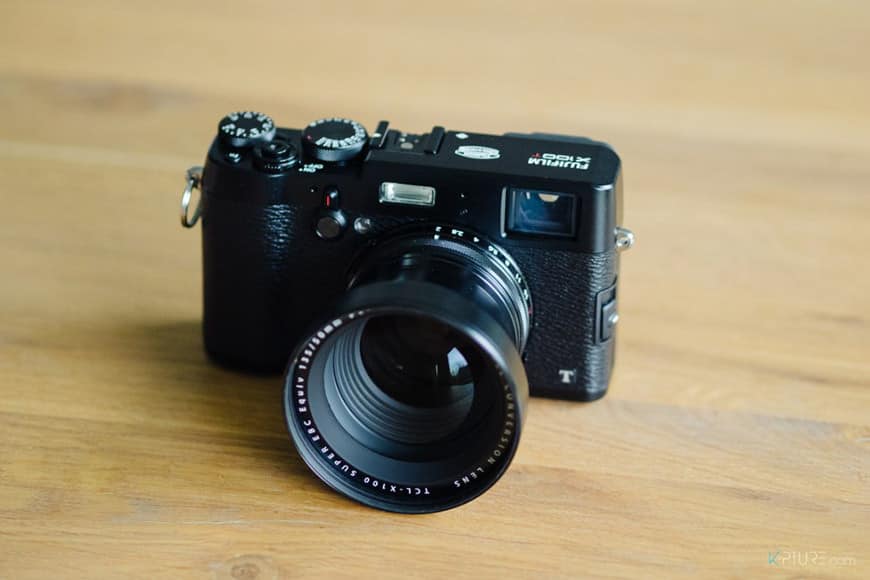
WHAT I DON’T LIKE
– Its four figure price, which represents quite a sum. I find this unreasonable despite the many evident qualities of the device. A price of three digits would be more accurate for me.
– Its handling, which is OK, but due to its shape, the X100T can easily slip from your hand. One of its few weaknesses.
– The eyepiece: Too small to completely cover the whole view for glasses wearers.
– The strap: The original strap supplied with the Fuji is the same as before with previous X100 releases. Ugly and slippery.
– The ON / OFF button is too soft – it changes position too easily and therefore may leave the device turned on without you noticing it.
– Video mode is useless. Fuji is not known for that. Honestly, I would have just left it off completely.
SHOULD WE UPGRADE FROM THE X100S/X100?
I could have titled this Fujifilm X100T review, “Should I upgrade my existing X100S). The question that many X100S owners must ask themselves. Should I upgrade or not? It’s difficult to answer this categorically.
The Fujifilm X100, X100S and X100T are very similar. Of course, the Fujfilm X100T brings a lot of new features and improvements. Some are very visible, others less. It all depends on your budget and especially on your use.
If you want a slightly more efficient AF, the integrated WiFi and a larger screen are important points for you; then I’d definitely recommend upgrading to the X100T. If you don’t need any of this, you will be happy with your older X100 model for many years.
For those who don’t own any of the X100 cameras, I would definitely recommend the Fujifilm X100T.
WHO IS THE X100 T AIMED AT?
First, and from what I read or see everywhere, the Fujifilm X100T is the companion of street photographers. Compact, discrete and extremely quiet (see above), it can go unnoticed and thus help you to capture real emotions and real life moments.
It can be equally be used in studio for portraits, provided you have the TCL-X100 1.4x adapter.
The Fujifilm X100T is of course also useful for photographs of daily life, since it is simple, discreet, efficient, and has excellent image quality straight out of camera.


THE FINAL WORD
The Fujifilm X100 has become something of a legend. Then the Fujifilm X100S came along which helped to improve it.
The Fujifilm X100T has just made this legendary camera almost perfect.
They are many small practical improvements, then there are other things that haven’t really changed.
The Fujifilm X100T is a great device. Small, fast, quiet, discreet -in daily use, the Fujifilm X100T could become the perfect device.
For me, this is a big deal to me and something close to my heart. I like this “return to simplicity” that the camera provides, and the image quality is just amazing. IMO, a must have. I hope you enjoyed my honest Fuji X100T review and it helps you make the right decision.
Guest Review by Belgium Wedding Photographer Frederic Frognier | www.k-pture.com





